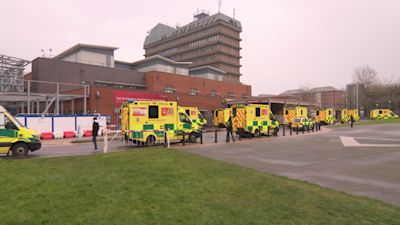What Gloucestershire’s hospitals are doing to reduce A&E waiting times

New measures and a major investment have been announced to reduce waiting times at hospitals in Gloucestershire.
More than £100million has been spent on new wards at Gloucestershire Royal Hospital, including a new emergency care unit.
Funding has also been set aside for improvements to Cheltenham’s oncology centre and radiology department.
NHS bosses hope the investment will improve services and help clear a backlog of patients following criticism about long delays.
Professor Mark Pietroni, who is the medical director at Gloucestershire Hospitals NHS Trust, said: “It only seems like yesterday that we welcomed contractors Kier onto our hospital sites to start the lion’s share of the building work last August.
“It’s hard to imagine that just six short months later Kier have handed us back one of those buildings.
“More broadly, this investment is about giving us an opportunity to provide the next generation of care at Cheltenham General and Gloucestershire Royal Hospitals in line with our vision for two centres of excellence.”
The new emergency care unit opened last month and has already treated nearly 900 patients.
Bosses say the unit will allow staff to give more on-the-day treatments, which will reduce hospital admissions and the need to go to A&E.
But ambulance delays are still being reported, with 18 emergency vehicles seen queuing outside the department on March 3.
Prof Pietroni said patients will be sent to Cheltenham or Gloucester depending on their needs.
“At Cheltenham, there will be a greater focus on planned care modelled on the outstanding service already provided by our cancer services and in particular the Oncology Department,” Prof Pietroni explained.
“At Gloucester, we will establish specialist services with a greater focus on urgent and emergency care.
“The opportunities for our staff and patients in delivering this vision are considerable with many specialist services rivalling and exceeding those found only in university hospitals in big metropolitan cities.”